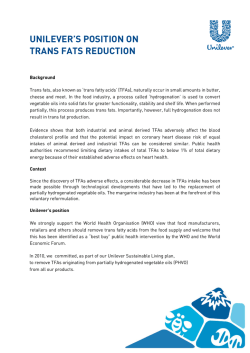
¡Cómo crece nuestro jardín! (Growing things) 5. At the market
¡Cómo crece nuestro jardín! (Growing things) 5. At the market Prior Knowledge: It is helpful if the children can recall some vegetable words Objectives Speak in sentences, using familiar vocabulary, phrases and basic language structures Develop accurate pronunciation and intonation so that others understand using familiar words and phrases Support Some children can be supported by having a picture clue on the back of their word card. For the human chain activity, children can be supported by moving around with another pupil. Select word cards which are easier to read / pronounce (eg: patata / tomate) Extension The game can be repeated in groups, where children have to remember the order in which vegetable cards are placed in the basket. This game can be varied by adding in other known vocabulary from previous units. Children can take on the role of a market stallholder and practise a simple shopping role-play with a partner. Main Revise the vegetables covered earlier in this unit. In English, talk about Jack’s visit to the market. Ask children to think about what is available to buy in a market, e.g. could you really buy a cow? Talk about markets in other countries and show photos/DVD clips of markets in Spain or Spanish-speaking countries. ICT Opportunities: Clips are available also from digital content providers or the internet. Import photos from an internet photo sharing site into a multimedia presentation. Incorporate some Spanish music and play as a running presentation during a five minute language session. Each child (or pair) is given a word card for one of the vegetables. Give an instruction to each vegetable, e.g. Los tomates, levantaos and children holding the tomato pictures stand up. Start a new activity using the same word cards. Children are given a word card and must whisper this word repeatedly as they move slowly around the room, trying to find anyone else with the same vegetable card. Once they have found the same vegetable they form a human chain. Say the phrase Me gustaría and ask children to listen and repeat. Write the phrase on the board and ask them if it reminds them of another Spanish phrase (me gustan). Explain that this new phrase mean ‘I would like’ rather than ‘I like’. Take the opportunity to practise the u sound. Remind the children that, like all the Spanish vowels, it is a purer sound than in English. Say the English sound oo as in moon and the Spanish sound u so that the children can hear the difference. Encourage them to watch the shape of your mouth as you say the sounds. Practise saying the phrase me gustaría as a class. Children (each with a vegetable word and/or picture card) sit in a circle and chant the following rhyme: En el mercado, me gustaría, me gustaría … (At the market I’d like, I’d like…) At the same time, a basket or bag is passed round. When the rhyme stops the child names the vegetable on their word card and places it in the basket. The rest of the class chorus por favor as the word card is put in the basket. The game continues until all children have placed their cards in the basket. Pupils could then organise words into dictionary order. ¡Cómo crece nuestro jardín! (Growing things) 5. At the market Grammar For teachers: Conditional tense – me gustaría means ‘I would like’ although it literally means ‘It would please me’. Grammar For children: No specific focus. Phonics focus For children: u – me gustaría Phonics focus For teachers: u – me gustaría Learning Outcomes New National Curriculum Children can: English recall and use vocabulary remember a sequence of spoken words Throughout the week: Writing – Years 3 - 4 Use the first two or three letters of a word to check its spelling in a dictionary Resources Begin to develop a role-play corner for a market and practise market role-plays. Photos or DVD clips of markets in Spain or Spanish-speaking countries Baskets or bags Text cards or labels for vegetables Teaching Tips Explain that it is polite in Spanish to address adults that you don’t know, i.e. someone who serves you, as usted and to include Señora or Señor. Add an action to por favor (eg: clasping hands together and begging!) as this may help some children remember the new vocabulary. For the final extension activity, use hand-held devices to video children’s performances and use as evidence of achievement, possibly in conjunction with an electronic version of the Junior European Language Portfolio. El lenguaje del profesor / de la profesora Un tomate Un pepino Una patata Una judía Teacher Language El lenguaje de los niños Children’s Language a tomato a cucumber a potato a bean a carrot Un tomate Un pepino Una patata Una judía a tomato a cucumber a potato a bean a carrot ¡Cómo crece nuestro jardín! (Growing things) 5. At the market Una zanahoria guisantes Levantaos Sentaos Levantad/Levanta el dedo Cruzad los brazos los tomates, las zanahorias etc. En el mercado me gustaría... por favor peas Stand up (plural) Sit down (plural) Put (plural/singular) your hand up (literally ‘finger’) Fold your arms tomatoes, carrots etc. (When I am) at the market I would like Please Hello. What would you like? (polite form) Buenos días, ¿Qué desea ? (usted : polite form) Me gustaría e.g. guisantes Aquí tiene (usted : polite form), gracias Adiós. I would like e.g. some peas There you are (polite form), thank you Goodbye Una zanahoria guisantes En el mercado me gustaría... por favor peas (When I am) at the market I would like Please (polite form) Hello. What would you like? (polite form) Buenos días, ¿Qué desea ? (usted : polite form) Me gustaría e.g. guisantes Aquí tiene (usted : polite form), gracias Adiós. I would like e.g. some peas There you are (polite form), thank you Goodbye
© Copyright 2026

